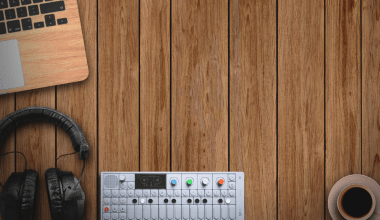So, you’ve created some incredible music and are ready to share it with the world. But one question looms large: how do you release music on all platforms? The good news? It’s easier than you might think! Whether you’re an indie artist or a seasoned musician, this guide will walk you through the entire process step by step. From picking a distribution service to promoting your music, we’ve got you covered.
Let’s dive in and turn your dreams of releasing music into reality.
Why Releasing Music on All Platforms Matters
If you’re wondering why it’s important to release your music on all platforms, here’s the answer: visibility. Platforms like Spotify, Apple Music, and YouTube Music cater to millions of listeners daily. By ensuring your music is available everywhere, you maximize your chances of reaching a broader audience. Plus, being present on all platforms boosts your credibility as an artist. After all, listeners are more likely to take you seriously if they can find your tracks easily.
Step 1 – Prepare Your Music for Distribution
Before jumping into the world of music distribution, make sure your tracks are ready. Here are some essential steps:
1. Ensure High-Quality Audio
Your music should be professionally mixed and mastered. Most platforms require a specific audio format, such as WAV or FLAC, for optimal sound quality.
2. Create Eye-Catching Cover Art
Visuals matter! Your album or single’s artwork is the first thing listeners see. Use high-resolution images and make sure the artwork represents your music’s vibe.
3. Organize Metadata
Metadata includes details like your track’s title, artist name, and genre. Accurate metadata ensures your music appears correctly on streaming platforms.
Step 2 – Choose a Music Distribution Service
To release music on all platforms, you’ll need a music distributor. These services act as the bridge between your music and platforms like Spotify and Apple Music. Here are some popular options:
- DistroKid: Known for its simplicity and affordability.
- TuneCore: Offers robust reporting and marketing tools.
- CD Baby: Great for independent artists looking for a one-time payment option.
- Amuse: A free option with premium features available.
When choosing a distributor, consider factors like pricing, royalties, and additional services such as playlist pitching.
Step 3 – Upload Your Music
Uploading your music to your chosen distribution service is a straightforward process. Here’s what you’ll need:
- Audio files in the required format (usually WAV or FLAC).
- Cover art that meets the platform’s specifications.
- Metadata for each track.
Once uploaded, double-check everything. Small mistakes in metadata can lead to big headaches later.
Step 4 – Set a Release Date
Timing is everything. Releasing music on all platforms requires careful planning. Here are some tips:
- Give yourself enough lead time: Upload your music at least two weeks before your desired release date. This allows platforms to process and approve your tracks.
- Coordinate with your marketing strategy: Align your release date with promotional efforts, such as social media posts or email campaigns.
Step 5 – Promote Your Music
Releasing music is just the beginning. To make an impact, you’ll need a solid promotion strategy. Here’s how:
1. Leverage Social Media
Platforms like Instagram, TikTok, and Twitter are powerful tools for connecting with fans. Post teasers, behind-the-scenes content, and countdowns leading up to your release.
2. Reach Out to Playlists
Playlist placements can skyrocket your streams. Contact curators on Spotify or use tools like SubmitHub to pitch your music.
3. Collaborate with Influencers
Influencers can help spread the word about your music to their followers. Look for influencers who align with your genre and audience.
Step 6 – Monitor and Optimize
Once your music is live, don’t stop there. Use analytics tools provided by platforms like Spotify for Artists and Apple Music for Artists to track your performance. These insights can help you refine your marketing strategies for future releases.
Conclusion
Releasing music on all platforms is a game-changer for any artist. By following this guide, you’ll not only reach a global audience but also lay the foundation for a successful music career. Start preparing your tracks today and watch your music take the world by storm
Related Articles:
For further reading, explore these related articles:
- Name the Music: Your Guide to Identifying and Loving Tunes
- How to Create an Outstanding Electronic Press Kit (EPK)
For additional resources on music marketing and distribution, visit DMT Records Private Limited.






